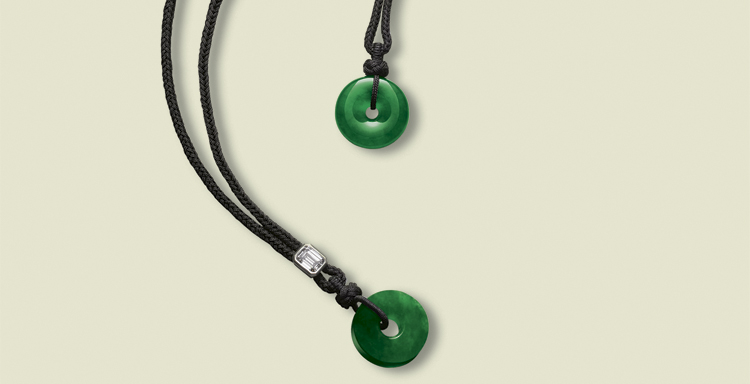Jade
'Never compare two pieces of Jade. One is always better than the other,’ my late aunt used to tell me. Her father, my grandfather, used to be a jade dealer in Canton and she learned to admire this discreet and fascinating gem which is called 'yu’ in Mandarin Chinese, or 'yuk’ in Cantonese. This traditional saying isn't limited to technical comparisons of stone: the phrase is used to dissuade against using comparison generally, as it is inevitably invidious.
Standing alone, Jade's hardness and workability have given it a fundamental place in several cultures, especially in China. Originally valued in the same way as quartz, for tools and weapons, as the stone age gave way it became valued for its beauty and scarcity.
The Chinese character for Jade is made up of the word for King, with the addition of a dot near the foot of the character. A stone at the foot of royalty. In Chinese this has a very wide context: any valuable stone is covered. To be more precise, and to fit the Western understanding of the term &ldquoJade”, the terms 'hard jade” and 'soft jade” are used to refer to the two main forms of precious stone, Nephrite and Jadeite. Both words take their English root from the Greek word for kidney, based on Jade's reputed efficacy for curing kidney ailments.
Both Nephrite and Jadeite were used in prehistoric times for similar purposes. Both come in a variety of colours, but Jadeite is rarer, occurring in only about 12 places in the world, and the famous translucent emerald green, the most prized, is found only in Burma and Guatemala. The principal source today of lapidary Nephrite is British Columbia.
Jadeite
In raw form, the stones come as rough boulders of any and all sizes. Sold at auction, buyers need experience, and also luck, for the blocks and fragments of stone are sold whole with only some initial grinding to show a small piece of the interior. Buyers have to hope that this little window is representative of the rest of the stone. Whether it is the most valuable green jade or something relatively worthless cannot be seen until after purchase and the cutting process has begun.
The plain boulders are carefully cut open so that the cutter can see the veins of colour in the stone. If he is lucky there will be a high proportion of the most valuable almost transparent emerald green, and all he has to do now is grind off the lesser coloured stone to reveal the gem in its purity. Much of the stone he has purchased is therefore wasted, and it is the skilled cutter who can divide-up his stone to keep the waste to a minimum while enhancing the various jewels he creates.
The Chinese believe that a piece of good jade can fight against evil spirits, hence the traditional custom for babies to wear jade. It is also believed that it reflects one's luck and health condition. The more brilliant and transparent, the healthier and luckier the wearer.
The value of jade is judged by its colour and purity. Emphasis is stressed on the intensity of the colour and the way it is distributed, the texture, the clarity and transparency. The most evenly distributed green, that shines through at the edges, can fetch a very high price. Nevertheless, gem stones containing veins, resulting in apparent blemishes and streaks running through the stones, can be just as valuable, as these can be considered beautiful in their own right, or if used to inspire any subsequent carving. Good jade is very expensive indeed. Antique jade gets its value from the skill of the carver and its antiquity as much as the gem-like properties of the stone. Valuing jade is not something the amateur should contemplate.
After certain coloured diamonds, the best jade is the most valuable gem stone, even over rubies and sapphires. It is said that Montezuma, watching that great thief, Cortez, cutting his swathe through Mexico in search of the gold, said "Thank goodness he doesn't know about the jade"
Buying and collecting Jade has traps for the unwary, so finding and patronising a reputable and knowledgeable merchant is a good first step. Perhaps the best approach would be to begin at one of the great Auction Houses, like Christie's. Their expertise and estimates of market value will put you on the right track while you develop your own eye for quality and price.
